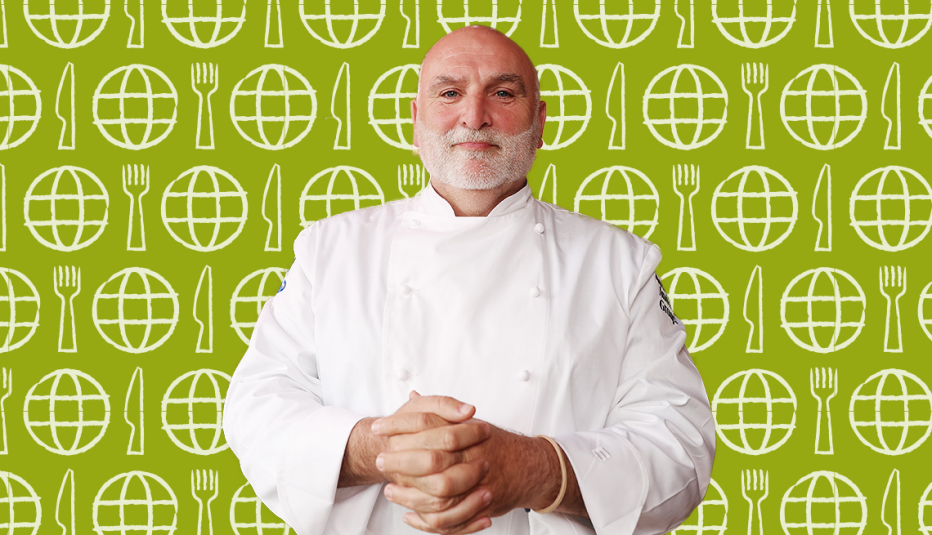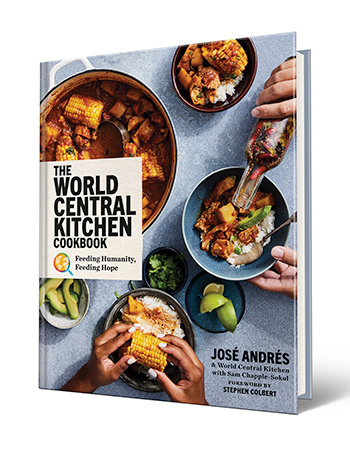Staying Fit


José Andrés, 54, is nearly as famous for his humanitarian work as he is for his flawless cuisine. The Spanish-born chef, who immigrated to the United States in 1991, has more than 18 restaurants in the U.S. and the Caribbean. In 2010, in response to the devastating earthquake in Haiti, he launched the World Central Kitchen, a nonprofit dedicated to feeding people in the wake of crises such as political unrest and natural disasters. For his efforts, in 2015, President Barack Obama honored Andrés with the National Humanities Medal.
In his latest cookbook, The World Central Kitchen Cookbook: Feeding Humanity, Feeding Hope, Andrés shares original recipes plus dishes from famous friends and supporters including Michelle Obama, Emeril Lagasse and Marcus Samuelsson. He shares with AARP more about the book’s mission and the ongoing impact he hopes to make for those in need.


AARP Membership— $12 for your first year when you sign up for Automatic Renewal
Get instant access to members-only products and hundreds of discounts, a free second membership, and a subscription to AARP the Magazine.
In times of crisis, why is familiar, nourishing food so vital?
During and after disasters, in the moments that we face the biggest, most traumatic moments of our lives, it’s so easy to lose hope. If you lost your home, lost a loved one, lost your belongings … it’s hard to keep moving. So we serve warm, comforting dishes — ones that don't just bring calories, but also bring nourishment — and a reminder that the sun will rise again tomorrow. We always need to work with empathy, imagining how we would want our own friends and family to be supported if they were facing disaster. That’s how we should be cooking for everyone.
Were you surprised by how many of your high-profile friends — such as Meghan Markle, Michelle Obama and Emeril Lagasse — contributed to this book?
I have to tell you, it was such an honor to be able to bring such amazing people into this project. Each one of them believes deeply in our mission and have helped us along the way, so it felt natural to ask. And every one of them was so generous to offer their recipes and stories to the book. Not a single person I asked said no! It feels incredible to be able to share space in this book with people like Mrs. Obama, Emeril, Marcus Samuelsson, Ayesha Curry … and also people who maybe you haven’t heard of before, like Sanjeev Kapoor, who is one of the biggest chefs in India (and maybe of all time), Aline Kamakian and Kamal Mouzawak, who run some of the very best restaurants in Beirut, and Brian Yazzie, who celebrates the foods of Indigenous Americans.
Are there any celebrity-sourced recipes that surprised you?
If you know me, you will know that I’m not really a sweets guy … but [Meghan Markle’s] Lemon Olive Oil Cake is something amazing. Not that I didn’t know she’s a very skilled baker and cook — she had her own food blog and everything — but since I usually don’t like cakes, it was a nice surprise when I tried it. … And I can assure you that the recipe works really well … even if you don’t have your own lemon tree!



































































You Might Also Like
Chef Amy Thielen’s Newest Cookbook
Author and TV host talks about the simple pleasure of cooking for the ones you love in ‘Company’
Globally Influenced Dishes
Take your taste buds on a vacation with these recipes inspired by far-flung locales
Five Fresh Salad Recipes
Whether you choose to make them as tasty side dishes or main courses, chefs share delicious ways to eat your vegetables